|
|
|
FRENCH RIVIERA
|
|
|
![]()
Description of Cannes
Origins of Cannes
The history of Cannes would go up in Oxybiens, towards 200 before Jesus-Christ.
Oxybiens were beaten by their neighbors of Nikaia – currently Nice – and those of Antipolis – Antibes -, with the assistance of the Roman troops; the Romans destroyed a small city called Aegitna, which would have been the origin of Cannes, and entrusted the area to Phocéens.
Phocéens – current Marseillais – built on the hill of the current Suquet a castle called Castrum Marsellinum, meaning the Château des Marseillais; this hill is surrounded by reeds, the local population renamed the castle in "Castrum Canoïs", cana meaning Latin reed. This name was naturally transformed in XVème century into Cannes.
Certain assumptions also let us think that the name of Cannes would come from "Kan", word of Indo-European origin meaning top by allusion to the hill of the Mont-Chevalier.
After the Romans, Cannes saw some cruel invasions, later those of the Sarrazins.
About the year 1000, the area of Cannes belonged to the abbey of Lérins before becoming property of the Comtes de Provence until the end of XVème century, it then became French.
In 1860, during the holding of Nice in France, Cannes part of the Alpes-Maritimes department.
In about 1834, with the arrival in English holiday makers Lord Brougham, large Chancellor of England, Cannes took its flight with creation in a few years of villas and chateaux, the transformation of its port and the installation of a coastal path becoming Promenade de la Croisette later. Cannes attracted the London high society and later the Russian aristocracy.
The first large hotel of luxury on the Small cross (Hôtel Gonnet de la Reine) was built in 1858 .
The rise of Cannes dates from the beginning of the XXème century, in particular with the construction of the Carlton hotel in 1910. The first International Festival of film took place on the 1st September 1939.
Head-place
of canton of the district of Grasse, in the department of Alpes Maritimes, the
town of Cannes owes its rise with tourism.
Its population (70 000 inhabitants), doubles even triples ftom July 15 to August
15.
The city
accomodates 2 million tourists per annum including those of the islands of
Lérins (commune of Cannes).
The city accomodates 55 annual congresses, ten festivals. (International
Festival of Film, Midem, Mip-TV, Mip-COM… etc).
The city has 32
art galleries, 2 museums, 18 movie theaters, many luxurious hotels (Carlton,
Martinez, Intercontinental…) and a casino.
Pictures of Cannes
 |
 |
If Cannes is a vacation resort appreciated by the whole world, it is not a chance. The beauty of its landscapes, the softness of its climate are there for much.
 |
 |
 |
 |
 |
 |
 |
 |
 |
 |
 |
Cannes and its old port, with different colors :
 |
 |
 |
 |
 |
 |
 |
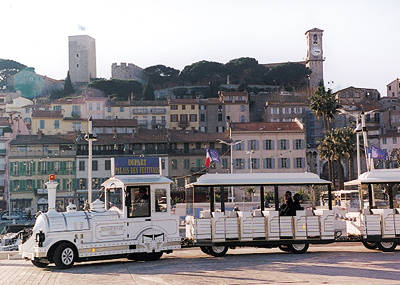 |
The small trains will make you traverse 2 circuits, the circuit of the Croisette, as well as the circuit of Suquet.
In the old port of Cannes, the fishermen’s boats are near the most sumptuous yachts.
 |
Suquet is the historical heart of Cannes.
Crowned by the ramparts of the Sarrasine Tower, Suquet dominates the old port and delivers an intact past: the Chapelle Sainte-Anne (XIIe century), the Musée de la Castre and the church Notre-Dame d'Espérance built at the XVIIe century.
The construction of the Tower of Suquet began at the same time as the monastery strengthened from the island St Honorat, (1070), time when the monks start to take refuge on the littoral to flee the island too not very sure. It was not finished until 1385! This tower of 22m completes the defense force of the castle of the monks of Lérins.
La rue St Antoine, opposite the station road, is bordered with restaurants. It is the oldest street in Cannes, practically a thousand-year-old. Take time to look et the facades, alcoves, staircases.... There are not many streets in the old Cannes. You will discover restaurants, small art workshops and other furtive sights on the sea.
 |
 |
 |
La rue Meynadier formerly the principal street of Cannes, remains the umbilical cord between the old city and the centre town. A pedestrianised road, it sparkles with life and there are also many enticing shops, shoes, jewellery, glassware, hat industry, craft industries in any kind, etc… without forgetting the food, butcheries, pork-butcheries, the cellars at wine, and its institutions impossible to circumvent like the four trade preceded by "le Mercure d’Or": Au bon ravioli and the house of the raviolis share a knowledge to make invaluable, La Ferme Savoyarde is well know for its cheeses, refined with passion, as for Jackie Corletto that made of the years that it levels his world with his breads with cereals.
In this district all the restaurants are as pleasant as the other, with terraces installed however narrow in the street.
|
|
 |
 |
 |
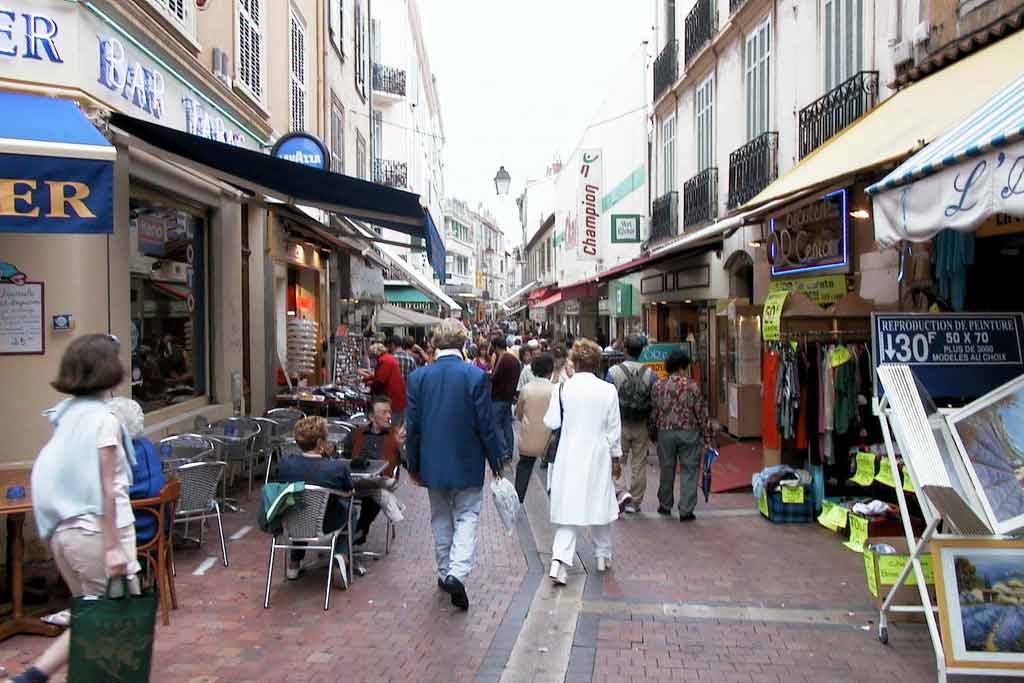 |
The Marché Forville is located in an animated district going back to 1870. The Forville district was formed at the foot of Suquet which was out of the city, from where it derives its name.
Universal center of provisioning of Cannes restaurants, it is a market really of Provence coloured and considered for its coldly fished fish the morning but also for its fruits and vegetables, without forgetting all the savour of local products: cheeses, olive oil…
 |
Don’t miss la rue d’Antibes where the shops, all more luxurious than the next.
The famous names in luxurious jewellery, the haute couture, and perfumery are present there.
 |
Cannes is universally known for its very famous Croisette.
From the Palais des Festivals in the west to the port Pierre Canto in the east, it extends in a symphony of colors. It raises the audacity of elegance with its de luxe hotels, its Festival, its windows with the prestigious claws…
La Croisette is unmissable walk in Cannes. A beautiful ballade, blue sea, hotels and palaces. In the summer it is very busy, as much in the day as the evening. At the end of the walk, there are gardens of palm trees, games for children. If you continue, you will find the port Canto and of course the famous Palm-Beach.
 |
 |
 |
Cannes conceals prestigious palaces on the Croisette.
 |
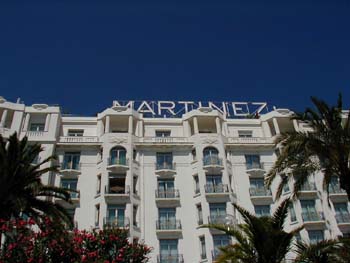 |
 |
 |
 |
 |
 |
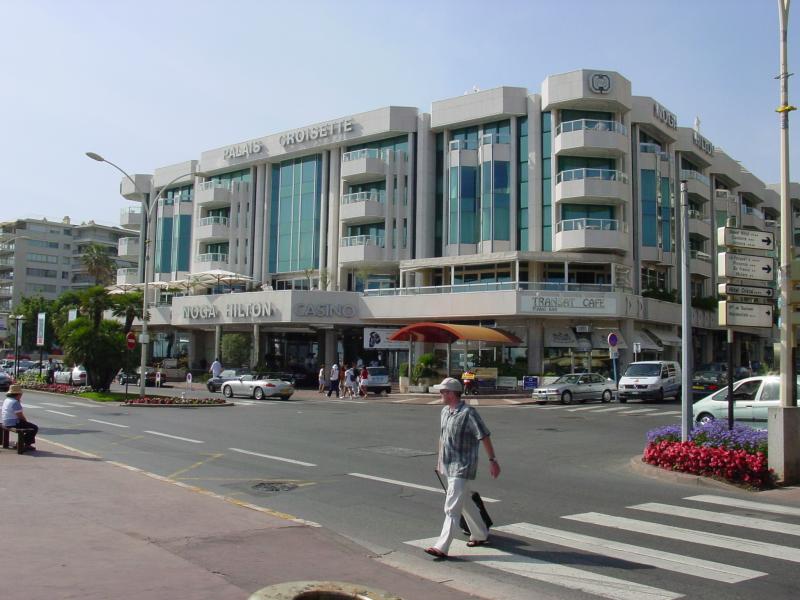 |
Town of culture, the sun and the softness of living, the festival of VIIème art in fact its fame.
By the grace of an annual Festival, Cannes is transformed into a world capital of the cinema.
 |
 |
 |
 |
Cannes is also le Musée de la Castre, le Musée de la Mer (on the Sainte-Marguerite island), La Malmaison, L’Espace Miramar, and many richly cultural places.
Cannes, by night offers splendid ludic and festives exits in its many brasseries, restaurants, piano-bars, cinemas, theatres and casinos…
 |
The islands of Lérins may be found close to Cannes: oasis of freshness, of calms far from the tumult of the coast. It is a the little secret garden of Cannois who protect this site since they have had the property of it.
 |
At 15 minutes off Cannes, a rich inheritance of history and legends.
The Sainte-Marguerite island shelters old Fort Royal which was built under Richelieu and was transformed by Vauban at the XVIIe century. You will be able to visit there the prisons of state built under Louis XIV and the dungeon of the man to the Iron Mask You will admire the murals of Jean Gac, and, with the Museum of the Sea, a significant collection of underwater archaeology: amphoras, glasses and ceramics. Lastly, you will be able to walk in the alleys of the botanical garden and through the middle of the pine forests.
 |
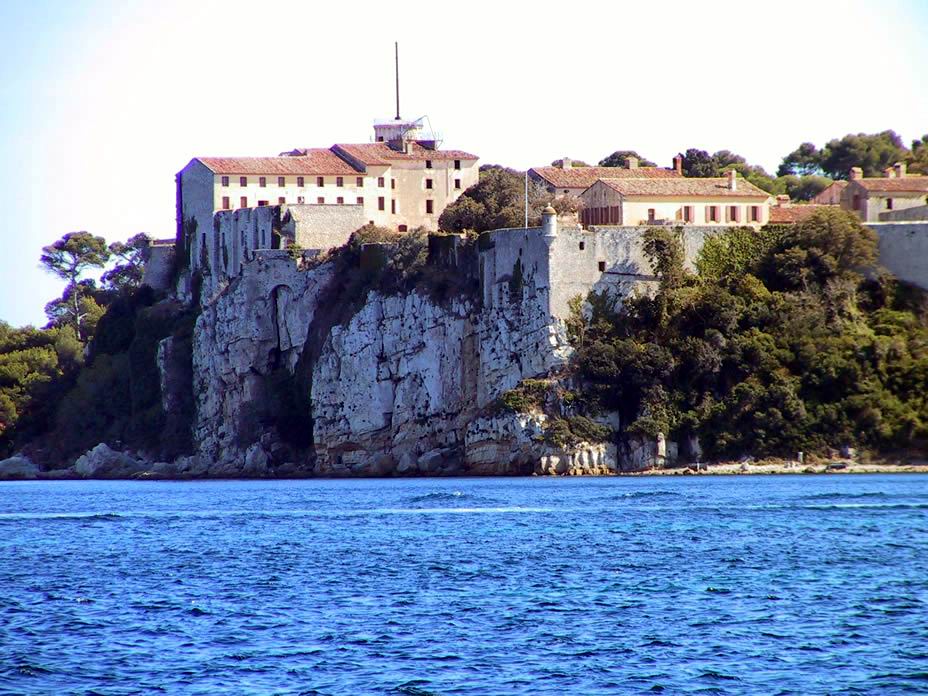 |
 |
 |
The Saint-Honorat island is famous for his Monastery, its Abbey and its castle. The monks cultivate the vines, rosemary, lavender.
 |
 |
 |
 |

Or